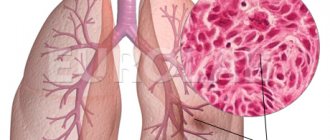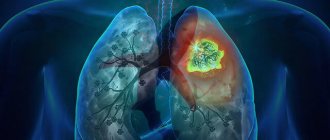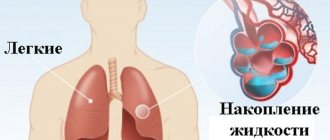In this article:
- What is mechanical ventilation?
- Indications for artificial ventilation of the lungs
- Invasive ventilation
- Who needs invasive ventilation and when?
- How does an invasive ventilator work?
- Features of equipment for invasive ventilation
- NIV - what is it?
- When is non-invasive ventilation used?
- Advantages of NIV
- Non-invasive ventilation in CPAP and BIPAP modes
- CPAP and BIPAP machines to help patients with COVID-19
- Long-term use of non-invasive ventilation: benefit or harm
Artificial pulmonary ventilation (ALV) is used to help patients with acute or chronic respiratory failure, when the patient cannot independently inhale the amount of oxygen necessary for the full functioning of the body and exhale carbon dioxide. The need for mechanical ventilation arises in the absence of natural breathing or in case of its serious disturbances, as well as during surgical operations under general anesthesia.
Indications for artificial ventilation of the lungs
Artificial ventilation is performed for acute or chronic respiratory failure caused by the following diseases or conditions:
- chronic obstructive pulmonary disease (COPD);
- cystic fibrosis;
- pneumonia;
- cardiogenic pulmonary edema;
- restrictive lung pathologies;
- lateral amyotrophic syndrome;
- obesity-hypoventilation syndrome;
- kyphoscoliosis;
- chest injuries;
- respiratory failure in the postoperative period;
- respiratory disorders during sleep, etc.
When is mechanical ventilation required?
Mechanical ventilation is used to provide assistance in cases where the patient is unable to independently inhale the amount of oxygen necessary for the full functioning of the body, as well as exhale carbon dioxide. The need for mechanical ventilation arises in the absence of natural breathing or when it is seriously impaired, for example, due to injuries, as well as during surgical procedures under anesthesia.
It is important to understand that timely connection of the patient to a ventilator maximizes his chances of survival. If a person who has stopped breathing is not connected to a ventilator, his internal organs are no longer supplied with oxygen. Afterwards, the heart stops, and hence the blood supply to the entire body, and the patient dies within a couple of minutes.
Ventilators are the most common format for artificial ventilation of the lungs
Invasive ventilation
An endotracheal tube is inserted into the trachea through the mouth or nose and connected to a ventilator.
With invasive respiratory support, the ventilator provides forced pumping of oxygen to the lungs and completely takes over the breathing function. The gas mixture is supplied through an endotracheal tube placed into the trachea through the mouth or nose. In particularly critical cases, tracheostomy is performed - a surgical operation to dissect the anterior wall of the trachea to insert a tracheostomy tube directly into its lumen.
Invasive ventilation is highly effective, but is used only if it is impossible to help the patient in a more gentle way, i.e. without invasive intervention.
Who needs invasive ventilation and when?
A person connected to a ventilator can neither speak nor eat. Intubation is not only inconvenient, but also painful. Because of this, the patient is usually placed in a medically induced coma. The procedure is carried out only in a hospital setting under the supervision of specialists.
Invasive ventilation is highly effective, but intubation involves placing the patient in a medically induced coma. In addition, the procedure is associated with risks.
Traditionally, invasive respiratory support is used in the following cases:
- lack of effect or intolerance of NIV in the patient;
- increased drooling or production of excessive sputum;
- emergency hospitalization and the need for immediate intubation;
- coma or impaired consciousness;
- possibility of respiratory arrest;
- presence of trauma and/or burns to the face.
How does an invasive ventilator work?
The operating principle of devices for invasive ventilation can be described as follows.
- For short-term mechanical ventilation, an endotracheal tube is inserted into the patient's trachea through the mouth or nose. For long-term mechanical ventilation, an incision is made in the patient's neck, the anterior wall of the trachea is dissected, and a tracheostomy tube is placed directly into its lumen.
- A breathing mixture is delivered through a tube into the lungs. The risk of air leakage is minimized, so the patient is guaranteed to receive the right amount of oxygen.
- The patient's condition can be monitored using monitors that display breathing parameters, the volume of supplied air mixture, saturation, cardiac activity, and other data.
Features of equipment for invasive ventilation
Equipment for invasive ventilation has a number of characteristic features.
- Completely takes over the breathing function, i.e. actually breathes instead of the patient.
- It requires regular checking of the serviceability of all valves, because... The patient’s life depends on the performance of the system.
- The procedure must be supervised by a doctor. Weaning the patient from the ventilator also requires the participation of a specialist.
- Used with additional accessories - humidifiers, cough cleaners, spare circuits, suction units, etc.
Classification
Ventilators are usually classified depending on a number of parameters:
- According to the patient’s age: there are different options for children over 6 years old and adults, for children under 6 years old, for infants and newborns;
- By mode of action: external, internal, electrical stimulators;
- By type of drive: manual, electric, pneumatic;
- By purpose: stationary or transport (they are also called mobile).
Do I need to buy oxygen tanks? More details
Non-invasive ventilation
Over the past two decades, the use of non-invasive mechanical ventilation equipment has increased markedly. NIV has become a generally accepted and widespread tool for the treatment of acute and chronic respiratory failure both in hospitals and at home.
One of the leading manufacturers of medical respiratory devices is the Australian company ResMed
NIV - what is it?
Non-invasive ventilation refers to mechanical respiratory support without invasive access (ie, without an endotracheal or tracheostomy tube) using various known assisted ventilation modes.
The equipment supplies air to the patient interface through a breathing circuit. To provide NIV, various interfaces are used - nasal or oro-nasal mask, helmet, mouthpiece. Unlike the invasive method, the person continues to breathe on his own, but receives hardware support during inspiration.
When is non-invasive ventilation used?
The key to successful use of noninvasive ventilation is recognition of its capabilities and limitations, as well as careful patient selection (diagnosis and patient assessment). Indications for NIV are the following criteria:
- shortness of breath at rest;
- respiratory rate RR>25, participation of auxiliary respiratory muscles in the respiratory process;
- hypercapnia (PaC02>45 and its rapid increase);
- Ph level
- symptomatic lack of positive effect from oxygen therapy, hypoxemia and gas exchange disorders;
- increase in airway resistance by 1.5-2 times the norm.
To perform non-invasive ventilation, the patient must be conscious and able to follow the instructions of the doctors. There must be a clear prospect of stabilizing the patient within several hours or days after the start of respiratory support. Absolute contraindications for NIV are:
- coma;
- heart failure;
- respiratory arrest;
- any condition requiring immediate intubation.
Advantages of NIV
One of the advantages of non-invasive ventilation is the ability to carry out therapy at home.
Non-invasive ventilation allows you to help a patient with acute or chronic respiratory failure without resorting to endotracheal intubation or tracheostomy. The technique is simpler and more comfortable for the patient. Let us list the main advantages of NIV.
- A respiratory support session is easy to start and just as easy to complete.
- The patient retains the ability to speak, swallow, eat independently, and cough.
- The procedure does not cause complications that are possible with endotracheal intubation and tracheostomy, including mechanical damage to internal organs by the tube, bleeding, swelling of the glottis, infection of the respiratory tract, etc.
- The air passes through the respiratory tract, due to which it is humidified, purified and warmed naturally.
- NIV can be performed at an early stage of the disease, i.e. before the patient's condition becomes critical. This shortens the duration of treatment, reduces the number of complications, and also reduces the risk of readmission.
- In many cases, devices for non-invasive respiratory support can be used not only in a hospital, but also at home.
- There is no “respirator weaning” period after completion of treatment.
Non-invasive conscious ventilation also has some disadvantages and side effects. For example, it is impossible to apply high treatment pressure, because this leads to significant leakage from under the mask. There is no direct access to the respiratory tract, so it is impossible to sanitize it. It is also impossible not to mention the likelihood of aerophagia, aspiration of stomach contents and skin irritation in the areas where the contour is adjacent.
Non-invasive ventilation in CPAP and BIPAP modes
The terms CPAP and BIPAP are often used interchangeably with NIV. These are common methods of non-invasive respiratory support using special portable devices. Many modern ventilators used in intensive care units have the option of CPAP and BIPAP.
Portable respirators are low cost (relative to resuscitation stationary ventilators), and they effectively compensate for even high air leakage. But most often they do not provide advanced monitoring of the patient's condition in real time.
Most resuscitation respirators can operate in CPAP and BIPAP modes. But more often, portable devices are used to provide respiratory support to a conscious patient.
In CPAP (continuous positive airway pressure) mode, the device supplies air under constant positive pressure, and the patient breathes spontaneously (i.e., independently). The method is used in the management of patients with moderate to severe obstructive sleep apnea syndrome (OSA), as well as post-traumatic or postoperative acute respiratory failure.
Bi-level positive airway pressure (BIPAP) devices have a wider range of applications and different mode options. Unlike CPAP, they involve an increase in pressure as you inhale and a decrease in pressure as you exhale. Thanks to this, it becomes possible to use high treatment pressure, but the patient does not experience discomfort in the exhalation phase, overcoming the resistance of the air flow. Two-level ventilation allows you to relieve the respiratory muscles, reduce the respiratory rate and increase the tidal volume. And the presence of auxiliary modes in modern models helps to select the optimal treatment protocol in accordance with the diagnosis and needs of the patient.
CPAP and BIPAP machines to help patients with COVID-19
Over the past few months, the issue of mechanical ventilation has been raised frequently in connection with the COVID-19 pandemic. High demand for ventilators has caused their shortage. The Australian company ResMed, as a manufacturer of medical respirators, is taking the necessary measures to prioritize the production of devices to assist patients with severe respiratory failure. But due to the acute shortage of equipment at the moment, alternative ventilation options, incl. non-invasive respiratory support.
The COVID-19 pandemic has led to a shortage of ventilators. In this regard, primary care for patients with coronavirus infection and symptoms of acute respiratory failure can be carried out using CPAP and BIPAP machines.
CPAP and bipap therapy can be used to provide primary care to patients with COVID-19 who require respiratory support. According to clinical protocols and reports received from clinicians in Italy and China, non-invasive ventilation (including BPAP and CPAP) for patients with COVID-19 is recommended in the following scenarios.
- To provide respiratory support to patients with respiratory failure who have not yet progressed to more severe hypoxemia.
- To facilitate extubation and recovery after invasive ventilation.
- To reduce hospital stays by allowing patients who still require respiratory support and rehabilitation to transition to home care.
NIV cannot replace invasive ventilation in the most severe forms of COVID-19. But this therapy is important when triaging patients in medical institutions. CPAP and BIPAP machines provide supplemental oxygen for less severe cases and reduce dependence on invasive ventilation. In addition, they are relevant for countries where hospital bed capacity turned out to be insufficient during the ongoing pandemic.
The following ResMed brand devices are suitable for home therapy: Lumis series BIPAP devices, as well as the AirCurve 10 CS PaceWave servo ventilator. They can be connected to additional oxygen (up to 15 l/min), as well as a module with a pulse oximetry sensor to monitor blood oxygen saturation.
Long-term use of non-invasive ventilation: benefit or harm
There is an opinion that the longer a patient is on a ventilator, the more difficult it is for him to refuse a respirator. This gives rise to the fear of “forgetting how” to breathe without a device and the fear of suffocation if the device turns off for some reason. But such risks occur only with invasive ventilation, when the device literally breathes instead of the patient. In turn, long-term use of non-invasive ventilation does not cause addiction, because the patient breathes on his own, and medical equipment only helps him with this.
According to research results, long-term non-invasive respiratory support (including at home) can optimize gas exchange, reduce the load on the respiratory system and reduce the risk of subsequent hospitalizations in patients with COPD. One of the advantages of long-term NIV is the ability to provide rest to the respiratory muscles, which are in a state of chronic fatigue.
Long-term use of non-invasive ventilation improves sleep quality and well-being while awake. When NIV is discontinued even for a week, patients with chronic respiratory failure begin to have morning migraines again, shortness of breath appears, and their night saturation also worsens.
NIV for chronic respiratory failure is most often performed at night. First, it increases the total time of respiratory support. Secondly, it helps eliminate nocturnal hypoventilation and episodes of desaturation, which most often occur in the REM phase of sleep.
Removal from the device
Of course, in most cases the device is not turned off immediately with one button. It is necessary to remove the patient from mechanical ventilation correctly. Lung support is gradually removed, and the patient begins to breathe better on his own. This process is complex, doctors need to determine whether everything is under control. Usually they are disconnected from mechanical ventilation if compliance is close to normal, there are no signs of heart failure, and sepsis is absent or subsiding (if there was one).
When using the device for a short time, a long shutdown is not required; it is maintained until the end of the anesthetic effect. In other cases, when mechanical ventilation has been prolonged, parameters begin to be reduced, primarily those that can lead to serious side effects.
Sudden cardiac arrest on the street: what to do before the ambulance arrives?
Resuscitation measures are carried out after establishing a state of clinical death, the main signs of which are: absent breathing and heartbeat, unconsciousness, dilated pupils, lack of response to external stimuli. To reliably determine the severity of the situation, it is necessary to determine the following indicators of the victim:
- check the pulse in the carotid arteries of the neck at the jaw angle - when the pressure drops to less than 60-50 mm Hg. Art. the pulse on the radial artery of the inner surface of the hand is not detected;
- examine the chest, check for spontaneous breathing movements;
- approach the victim’s face to check breathing, determine inhalation and exhalation (air movement assessment);
- pay attention to the color of the skin - cyanosis and severe pallor appear when breathing stops;
- check consciousness - lack of response to stimuli indicates coma.
Cardiopulmonary resuscitation according to the new standards is carried out only in two cases. You should start performing CPR only after determining your pulse and breathing.
If the pulse is clearly detected for 10-15 seconds and atonal breathing is disturbed with episodes of convulsive sighs, artificial respiration is required. To do this, you need to take 10-12 breaths “mouth to mouth” or “mouth to nose” over the course of a minute. While waiting for an ambulance, you need to measure your pulse every minute; if it is absent, CPR is indicated.
If spontaneous breathing and pulse fail, a set of resuscitation measures is indicated strictly according to the algorithm.
Consciousness testing is carried out according to the following principle:
- Address the victim loudly. Ask what happened and how he feels.
If there is no response, use painful stimuli. Pinch the top edge of the trapezius muscle or apply pressure at the base of the nose.- If there is no reaction (speech, twitching, attempts to defend yourself with your hand) - there is no consciousness, you can move on to the next stage.
Breath test:
- Tilt your head back (holding it by the back of your head and chin) and open your mouth. Inspect it for foreign bodies. If they are there, remove them.
- Bend towards your face and for 10 seconds. check your breathing. You should feel it with your cheek and hear and see the movements of your chest. Normally, 2-3 breaths are sufficient.
- If there is no breathing or only 1 breath is felt (which can be considered its absence), we can assume the cessation of a vital function.
In such a case, it is necessary to call an ambulance and begin performing resuscitation measures in case of cardiac and respiratory arrest.







